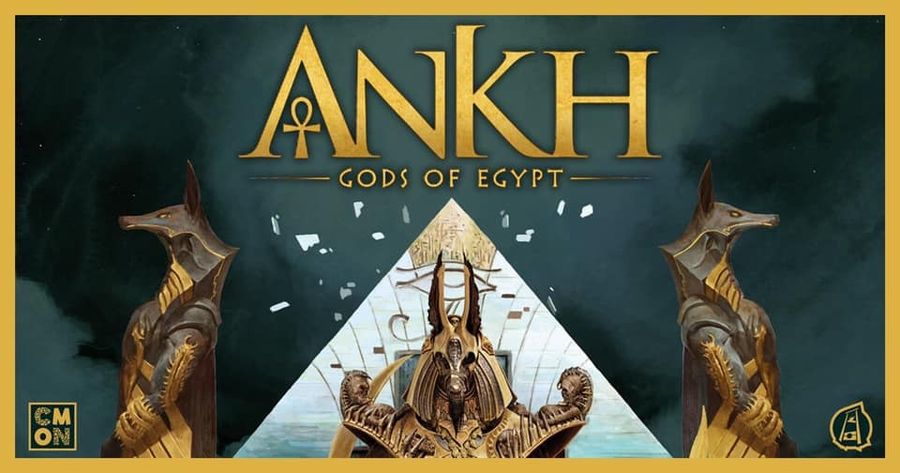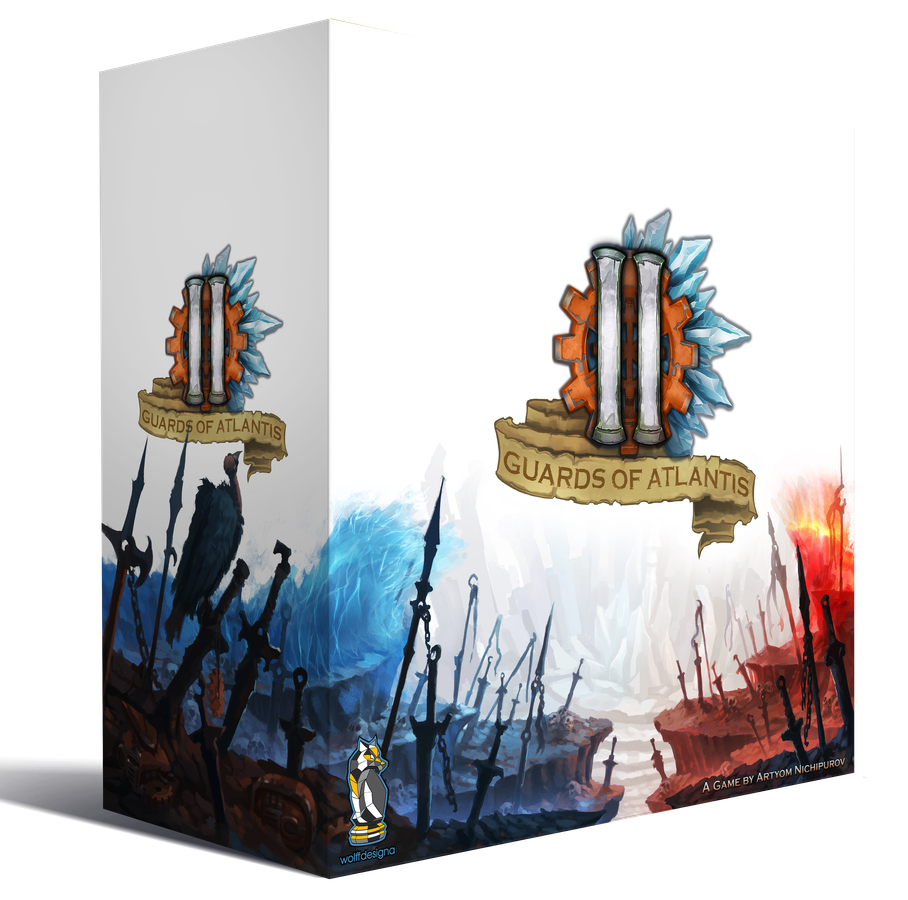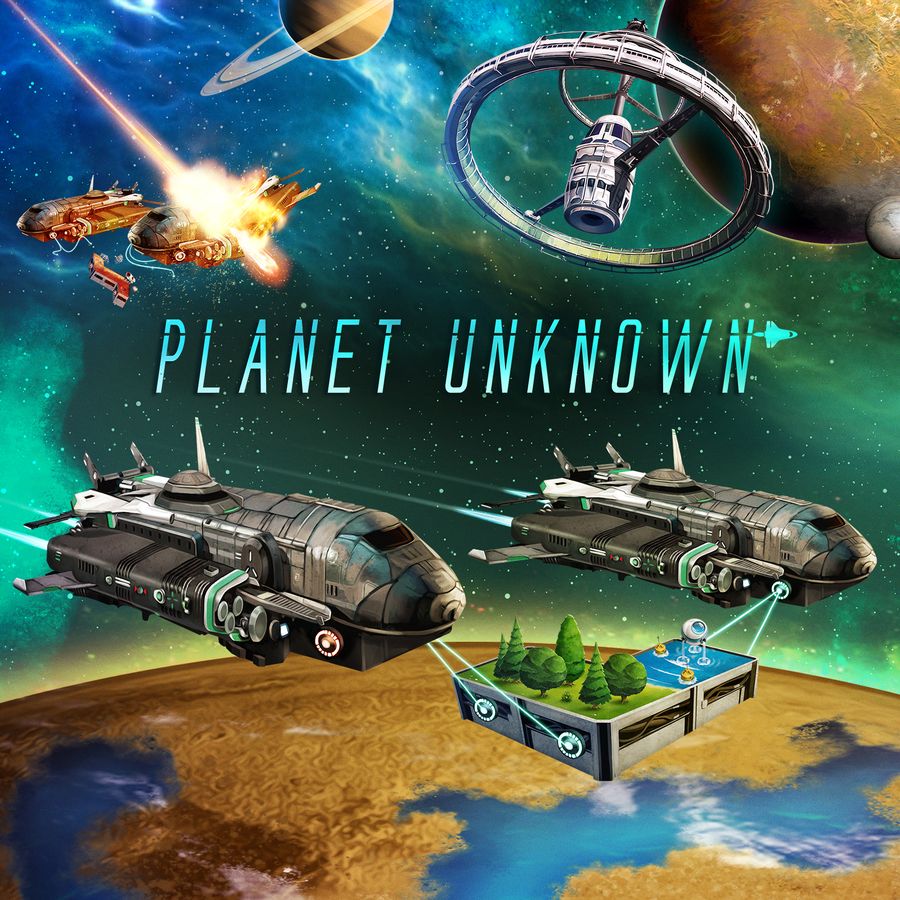As we all try to stay involved in board gaming through this period of social distancing, it’s tough not to spend time reading up about games and watching videos when we’d normally be playing games instead.
This situation has impacted everyone in some way, and while we understand many people can’t even financially consider backing games on Kickstarter right now, we’re still bringing you these monthly recaps as a way for you to keep up with what’s out there. And, best of all, many of these have digital implementations that can be tried out for free on Tabletop Simulator and/or Tabletopia. Read on to find out which ones.
ANKH: GODS OF EGYPT
Kickstarter page: https://www.kickstarter.com/projects/cmon/ankh-gods-of-egypt
Campaign ends: May 4th
Scheduled to ship: May 2021

Let’s start with the biggest and most obvious choice. Eric Lang and CMON team up once more to release the next in the line of Blood Rage and Rising Sun. This time, you’re an Egyptian god, competing against your enemies to be the one true god.
Ankh is a 2-5 player game that takes about 90 minutes. Each god has unique powers and will gain devotion (victory points) in a variety of ways. Throughout the game, conflicts will take place to determine who has dominance of territories, which can lead to battles. Players can also acquire mythical guardians to help them in battle.
I’d like to highlight a few particularly interesting mechanics. The devotion track starts with a long red zone, and ends with a shorter blue zone. After the fourth conflict of the game, any players in the red zone on the devotion track are eliminated. So, if all players are in the red zone, they ALL lose. If only one player remains in the blue zone, they win. If more than one player remains, they continue playing until the fifth conflict is resolved, at which point the game ends and the player furthest ahead on the devotion track wins. The player elimination might seem harsh to some, but it makes the stakes even higher for the players who remain, and prevents anyone who’s too far behind from sabotaging one player out of spite or revenge.
Arguably the most interesting mechanic, whether you like it or not, is that at the end of the third conflict, in a game of three or more players, the two players furthest back on the devotion track essentially merge into a single player for the rest of the game. The weaker of the two gods is removed from the board, while each player continues playing turns as the stronger god that remains. For the rest of the game, those players combine their powers and must try to win as a team or lose together. Some players might not like being forced to team up with an opponent, but it’s a unique take on a catch-up mechanic that could lead to some really memorable comebacks.

There’s a central board where players advance when actions are taken, and when the token gets to the end of a track, an event is triggered by the player who moved the token that turn. So you’re trying to predict when those events will trigger and who will trigger them. Players can also build caravans across a territory to divide it. Additionally, players have six battle cards that can be used during conflicts, one per conflict. Players choose one in secret each battle, then all reveal their cards simultaneously. Miracles, droughts, floods and plagues are just some of what these cards have to offer.
As with most CMON games, there are a ton of minis here. If you’re a fan of minis, this game likely has you drooling already. Unfortunately, these really drive up the cost of the game so you’ll have to decide whether or not it’s worth it for you. It’s worth noting that many people were frustrated by the Rising Sun Kickstarter, and I won’t get into that as you can read about it for yourself online, but I feel the need to mention it in case it would factor into your decision.
Regardless, this game is steeped in Egyptian theme and mythology, and you probably know just by looking at this whether it’s for you or not. If you’re looking for a fresh take on that cutthroat style area control game with cool miniatures, this is it.
GUARDS OF ATLANTIS II: TABLETOP MOBA
Kickstarter page: https://www.kickstarter.com/projects/wolffdesigna/guards-of-atlantis-ii-tabletop-moba
Campaign ends: May 21st
Scheduled to ship: May 2021

The sequel to the critically acclaimed tabletop MOBA promises to be a better, more refined version of what made people love the first one so much. Everything done by Artyom Nichipurov and publisher Wolff Designa has made the game faster and more accessible while offering plenty of interesting new synergies and strategies.
Guards of Atlantis II is a 90-150 minute game for 4-6 players which can go up to 8 or 10 players with additional Hero packs. This is a team game based on the MOBA style of video games such as League of Legends, Dota 2, Heroes of the Storm, etc. In MOBA games, the basic premise is that you start on the opposite side of a map as another team. You and your teammates are pushing lanes of your minions, attacking enemy Heroes and minions as you go, in an attempt to reach the enemy’s base and capture their throne.

Each player controls a unique Hero with its own distinct cards and abilities. At the start of each round, each Hero has five cards, each of a different colour. Each turn, players secretly choose a card to play then reveal their cards all at once. They then determine the order the cards trigger based on initiative level, going from highest to lowest. Each player resolves their card for that turn, and then the next turn takes place. Each round lasts four turns. At the end of a round, minions will battle each other, the board state will be assessed to see if a lane pushes in either direction, and players might level up. When you level up, you get to upgrade one of your five cards to a new card from your Hero’s specific, unique deck.
When a Hero dies, they respawn at their throne at the start of the next turn. Each team can respawn heroes a limited number of times. When they exceed that limit, the other team wins. There are also wave counters, and each time a lane pushes, a wave counter is removed. After all wave counters are removed, the game ends and the team that won the last push wins.
The base game comes with 7 Heroes, and there are three additional Hero packs with 5 Heroes each for a total of 22. With different Hero combinations each game and so many different builds to explore for each Hero, this seems to offer almost endless replayability. Some of the biggest features are that the game has no luck, no dice, and even though there are cards there’s no shuffling required.
This won’t be available in retail, so although it’s a pricey one, this won’t be easy to find if you don’t back it on Kickstarter. You can try it out on Tabletopia and Tabletop Simulator to see what you think!
CANVAS
Kickstarter page: https://www.kickstarter.com/projects/roadtoinfamy/canvas-2
Campaign ends: May 19th
Scheduled to ship: Dec 2020

Stunning, colourful artwork drew me in, but aesthetic appeal isn’t all Canvas has to offer. If you’ve played Mystic Vale, this might sound familiar to you. In Canvas, players acquire transparent cards with artistic components on them, and combine sets of three layered cards into sleeves to create paintings. Once all players have completed three paintings, the game ends and points are tallied to determine the winner.
Canvas is a 1-5 player game that takes about 30 minutes. It’s designed by Jeffrey Chin & Andrew Nerger along with Road to Infamy Games. On your turn, you simply take a transparent card from the row. The leftmost card is free, while each subsequent card to the right costs an extra Inspiration token, which you place on each card. If the card you take has any Inspiration tokens on it, you gain those tokens. Aside from acquiring cards, you can instead use your turn to create a painting by assembling three of your cards.

The rules are fairly simple, but the strategies and decisions will vary each game thanks to the scoring cards. Each game there will be four scoring cards as public objectives to guide how players create their paintings based on the icons showing. Meeting these goals will earn you ribbons, which are your points. There are millions of unique combinations to be seen and with this absolutely gorgeous artwork from Luan Huynh, why wouldn’t you want to play again?
If you back this on Kickstarter, you get a discounted price of 38% off MSRP, and early delivery, one month before retail. You can check this out on Tabletop Simulator, and while it really won’t do the beauty of this game justice, you can see exactly how the gameplay flows.
PLANET UNKNOWN
Kickstarter page: https://www.kickstarter.com/projects/adamsapplegames/planet-unknown
Campaign ends: a few hours!
Scheduled to ship: January 2021

These polyomino puzzle style games have become so popular in the last few years, and considering how many I have already, I’m not exactly searching for another one, but I just can’t ignore Planet Unknown. There’s too much to like here.
It’s a 1-6 player game that plays in about 70 minutes. Designed by Adam Rehberg and Ryan Lambert, and published by Adam’s Apple Games, Planet Unknown features tile drafting, engine building, evolving obstacles, and so much more. Each player starts with an asymmetric planet along with an asymmetric player board which represents their corporation. Each planet has a unique layout with characteristics specific to only that planet. Each corporation player board has progress tracks with different rewards that will trigger along your way up the respective tracks.
In Planet Unknown, you’re trying to fill up rows and/or columns on your planet board in order to score points for those rows and/or columns, as only the ones entirely filled will score you points. Placing tiles will trigger obstacles (meteors) which need to be cleaned up by your rovers before the game ends in order to score the available points in the row and column of the obstacle. There will be planet goals that sit between players and those two players will compete to obtain the points for those goals. The game has virtually no downtime as players draft tiles simultaneously from a rotating board. The deluxe edition actually features a Lazy Susan that not only makes setup and storage a breeze, but also functions as a mechanism to simplify and improve the drafting.

With 144 unique polyomino tiles, 12 double-sided planet boards (initially 6 but more have already been unlocked via stretch goals) and 7 corporation player boards, there are so many strategies to explore. This also comes with a solo deck with three difficulty levels, although I imagine the game is best with more players.
This one’s also available to try on Tabletop Simulator.
VALKNUT
Kickstarter page: https://www.kickstarter.com/projects/luisbrueh/valknut
Campaign ends: yesterday (but late pledges are being accepted!)
Scheduled to ship: September 2020

The last game on the list might be the smallest and least popular of the bunch, but I can’t get over how good this one looks. It’s advertised as a skirmish game for two players, but the campaign clearly shows it can be played with up to four players.
Valknut is based on Hnefatafl, one of the oldest games in the world, whose roots can be traced back to the Vikings, Welsh, Saxons, and Irish. The basic idea behind Hnefatafl is that all pieces on the board move like rooks in Chess (only left, right, up or down in straight lines), and you are trying to sandwich your opponent’s pieces to eliminate them from the battlefield. Luis Brüeh was fascinated with Hnefatafl and decided to create a newer take on this ancient game.
Valknut features simple rules that allow for quick games that last 10-15 minutes but are packed with tough decisions. Each player takes the role of a warband commander with unique powers. Players start with a limited number of units on the board. Each turn, you place a new terrain tile somewhere adjacent to the current map. If the tile has a Valknut symbol, you may add a new unit of yours to that symbol. Then, you can move as many times as the number showing in the center of the terrain card you added. For example, if you reveal a 2, you can move twice – either two different units once each, or the same unit twice. If you reveal a Valknut and you cannot add a unit, you add +1 to your movement.
As the game progresses, the battlefield expands and the terrain deck depletes. Obstacles such as mountains, rivers, and of course other units cannot be moved through, unless a specific warband’s attributes allow for it. Obstacles can also be used to sandwich an enemy unit between your own and eliminate it.
If you kill all enemy units on the battlefield, you win. If the final terrain card is placed, each warband with at least one unit remaining will tally up the points showing on their units in the battlefield, and the most points wins.

What makes this game really shine is the asymmetric warbands that all come with a unique ability and number of units. There’s a great video on the Kickstarter page that gives a brief overview of how the warbands each function, and that’s what sold me on this clever game.
With nine different warbands to experiment, a few variants, and the Gods & Monsters expansion, this relatively inexpensive small box game promises incredible value and replayability.
You can try it out on Tabletop Simulator and Tabletopia. Additionally, Luis Brüeh has a print-and-play version available.
Even though the campaign ended yesterday, you can still make a late pledge if you’re interested in this one.
That’s all for April! There are plenty more games out there that caught our attention this month but there were just too many good ones to include them all.
Agree with our choices? Any games you expected to see that didn’t make the list? Let us know in the comments below or send us an email at allyoucanboard@gmail.com.
1 comment
Leave a reply
You must be logged in to post a comment.







Like!! Thank you for publishing this awesome article.